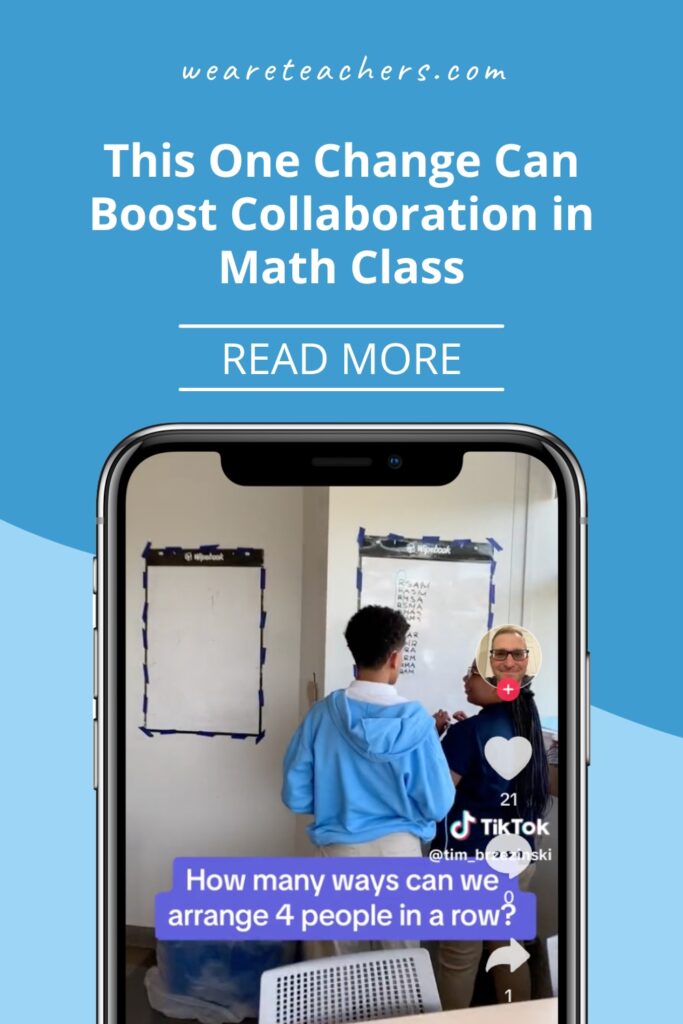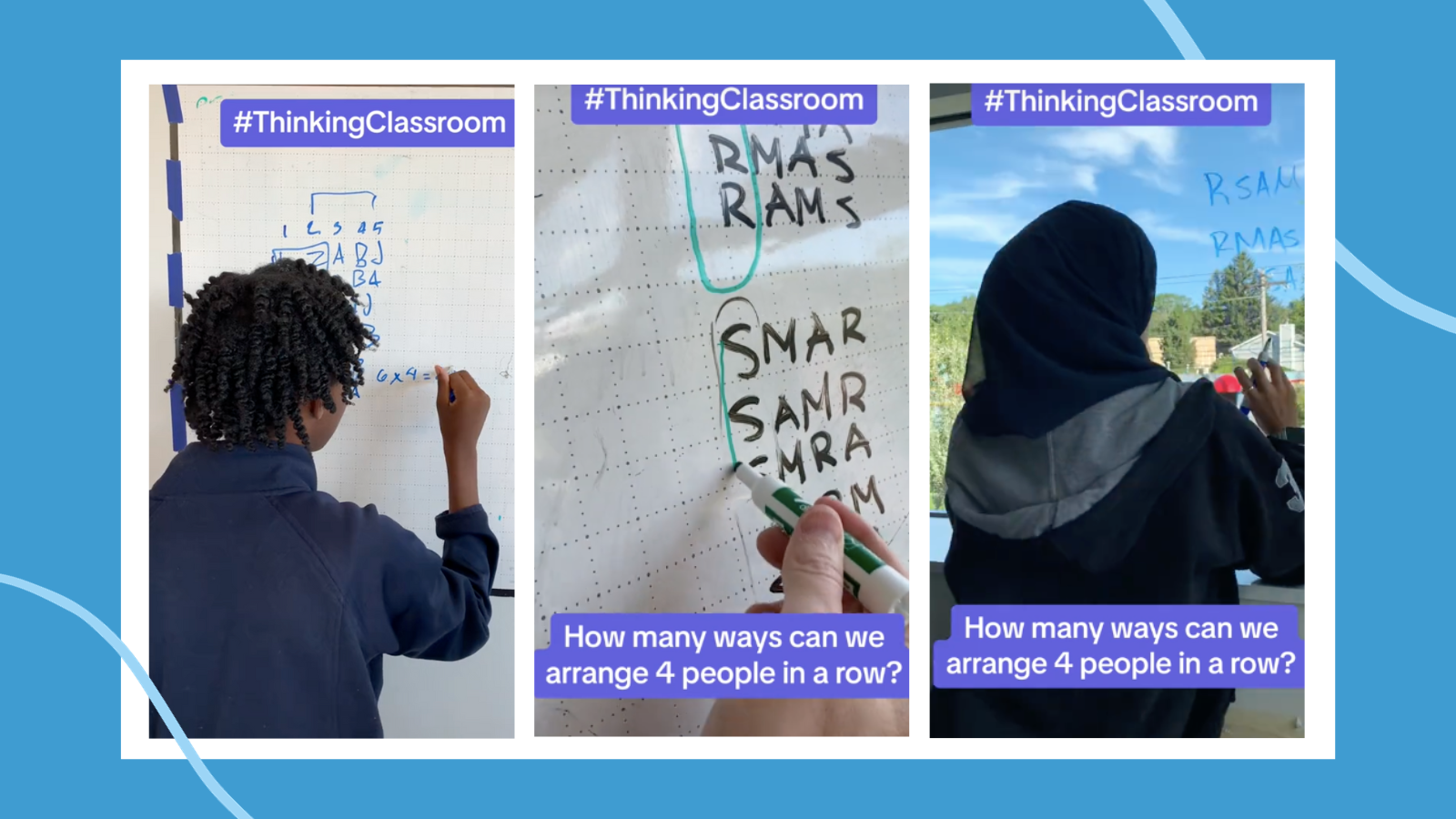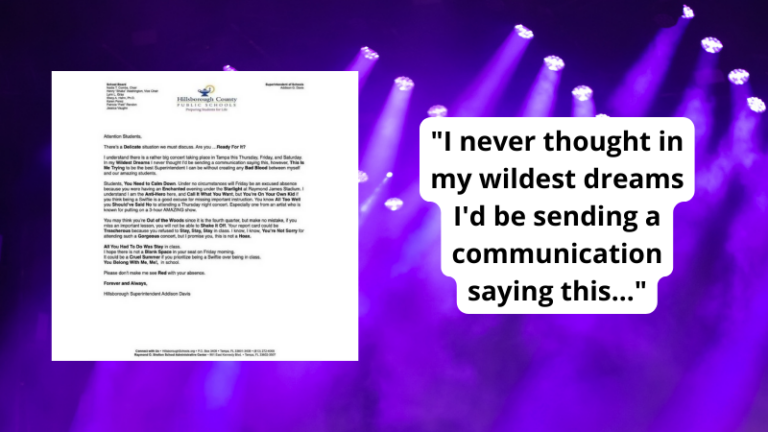Excitement, engagement, collaboration. These are words a teacher might use to describe their ideal math lesson, but struggle to make a reality. TikTok user and math teacher Tim Brzezinski has managed to make this dream class come to life. The good news is, it’s not magic or wizardry. Tim is using research-based thinking classroom strategies that can be implemented in any math classroom at any grade level. Let’s see them in action.
I was blown away by Tim’s students. The scene in his room was far from the orderly rows and note-taking that characterized my middle and high school math classes. In his room, every student was standing, participating, and taking turns writing on a variety of surfaces (including windows!). Looking and listening closely reveals each group in the video had a different approach to the problem. No one was mimicking a pre-taught strategy, and the discussion around their approaches was authentically varied. In other words, a teacher’s collaborative-learning dream. Are you curious about how to re-create this scene in your own middle or high school math classroom? Let’s dive into the key strategy Tim uses to create the space for high-level mathematical thinking. Plus, we’ll take a look at the smaller strategies he uses to keep his students moving forward.
Vertical non-permanent surfaces
Did you do a double take when you saw students writing on the windows? There’s actually a special term for this! Tim’s students were using what thinking classroom teachers refer to as vertical non-permanent surfaces. VNPSes are exactly what they sound like—any vertical surface that students can write on while standing and easily erase. Wondering why these two features make such a difference? Professor and author of “Building Thinking Classrooms in Mathematics” Peter Liljedahl has your answers.
Liljedahl’s research spans 40+ classrooms over several decades and provides some convincing results. He found two key reasons shifting students to a standing position dramatically increases engagement. Students who are asked to work on vertical surfaces as opposed to horizontal whiteboards or paper took less time to initiate the task, spent more time on task, and showed increased participation of all group members. Liljedahl found this increase in engagement has to do with the anonymity students feel when stationed behind a desk. “Having students stand,” Liljedahl reports, “immediately takes away that sense of anonymity, and with it, the conscious and unconscious pull away from the tasks at hand. … When students are working on vertical whiteboards, they don’t feel unsafe. They just don’t feel safe to get off task.”
Additionally, the “non-permanent” part of VNPS is also crucial. Making it easy to erase mistakes promotes academic risk-taking. Students are far more likely to attempt a novel strategy if they feel their mistakes won’t be on display.
If that’s not enough to convince you to get your students out of their seats, there’s an additional benefit to the vertical aspect of these surfaces. It’s easy for students and teachers to look around and see how different groups approach a task when kids display their work on walls and windows. While this might create a concern over cheating or copying, Liljedahl’s work shows this is extremely rare, and it actually promotes a unique aspect of thinking classrooms: knowledge mobility.
How they promote knowledge mobility
Did you catch that one group in the TikTok had completed the initial problem, “how many ways can we arrange four people in a row?” This group had moved on to an extension task and were trying to figure out how many different ways they could arrange five people in a row. Thinking-classroom pedagogy recognizes that all student groups will work at different paces and will not be ready to move to a more challenging task at the same time. Because groups are working asynchronously, Tim is able to give the next piece of the task out as needed.
This is where knowledge mobility comes in. If a group across the room completes the four-person portion of the task, the vertical nature of the work surfaces means they can look around and see what their classmates have moved on to tackling. This allows students to continue making progress without waiting for Tim to check in with their group. Students see their peers as a resource to keep them moving forward and are less reliant on their teacher to continue thinking.
Pro tip: Color-code for marking work
OK. So now you’ve got students working vertically, looking to other groups to get new ideas and extensions to the task. But the surfaces they’re working on are non-permanent, meaning they can be easily erased. Wouldn’t this erasability risk some critical pieces getting removed, disrupting the flow of knowledge between groups?
In the middle of the video, you might have noticed Tim circling a portion of a group’s work in green marker. Following thinking-classroom protocol, green would be the “teacher color.” Work Tim wants his students to preserve would be outlined in green as a signal not to erase it. It also provides him with a visual record of the groups he has checked in with.
In addition to preserving work for knowledge mobility, Tim ensures that problem-solving strategies he wants to highlight will be visible in student work. Following the conclusion of work time, Tim likely asked student groups to explain the approach they used in work he outlined. Alternatively, he could also ask groups to visit another work station and try to explain their peers’ approach to solving the problem by deciphering their work. Both approaches are mainstays in thinking classrooms and allow students to see one another as resources for learning.
For more content like this, be sure to subscribe to our newsletters!


